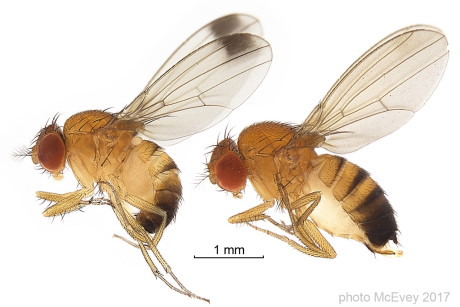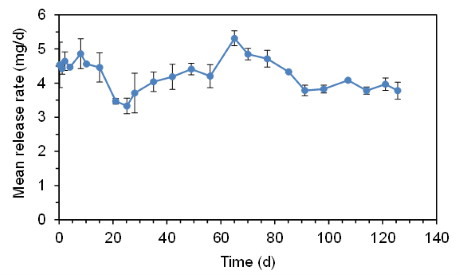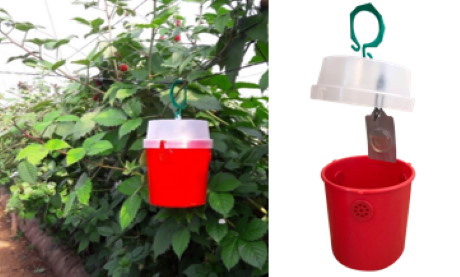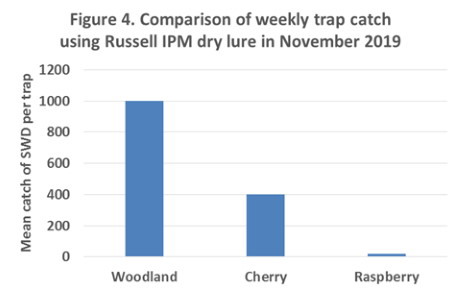Drosophila suzukii (spotted wing drosophila, SWD, Figure 1) has caused more damage to soft fruits this year, compared to all previous years that it has been present in the UK (since 2012). SWD overwinter as adult males and females in sheltered woodland and hedgerows. Adults then move from overwintering sites into growing crops to feed on ripening fruit the following season.
Now is a good time to trap the overwintering population. Traps with the dry lure (XlureSWD) can be deployed now and left in place throughout the winter.

Figure 1. Male (with spotted wing) and female (with serrated ovipositor) Drosophila suzukii.
The lure’s main advantage is that it is long-lasting and releases attractive volatiles evenly, over a period of up to three months (Figure 2). It was developed in collaboration with East Malling Research (NIAB-EMR) and the University of Greenwich.

Figure 2. Prolonged release of volatiles from the Russell IPM dry lure, XlureSWD, in a wind tunnel (20-22°C, 4 m.p.h.). Data from University of Greenwich.
The lures require no maintenance, they are clean and easy to use and can be combined with a variety of traps and killing agents (Figure 3).

Figure 3. Russell IPM Suzukii trap in raspberry and with XlureSWD
Field trial data shows that at this time of year (November), Xlureswd is attracting the greatest number of SWD flies in woodland, compared to un-fruiting crops (Figure 4). Place traps at 2 metre intervals around the perimeter of the crop to reduce crop invasion from woodland and overwintering sites (80-100 Suzukii traps per ha), or place throughout the woodland areas and hedgerows.

For more information: Clare Sampson
Clare Sampson
Russell IPM Ltd
01244 281 333
[email protected]
www.russellipm.com
